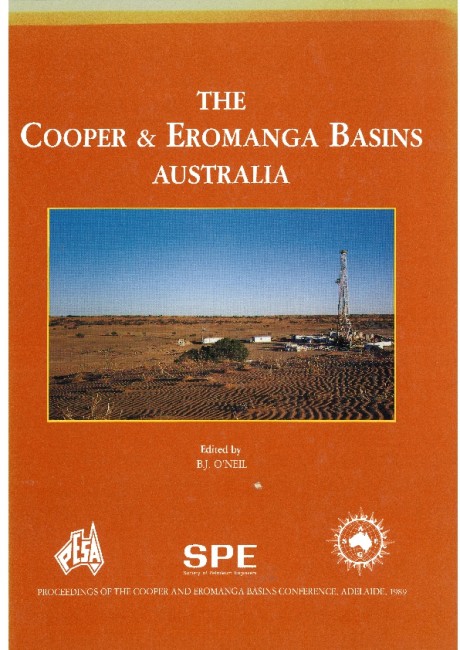Publication Name: The Cooper & Eromanga Basins Australia
Authors: J.G.G. Morton
Date Published: June 1989
Number of Pages: 25
Reference Type: Book Section
Abstract:
Over 850 new core plugs from 46 wells in the Cooper Basin in South Australia were cut in an attempt to improvelog analysis (porosity and water saturation [Sw]) algorithms currently in use. All plugs were measured for porosity and permeability (both at laboratory and reservoir pressure), cation exchange capacity (CEC), and grain density. Selected plugs were analysed for multiple salinity electrical properties as a check on CEC determinations and to determine the factors m * and n * for use in the WaxmanSmits Sw equation. A factor has been determined which corrects porosity measured at ambient laboratory conditions to overburden conditions, and relationships have been derived for correcting ambient permeability data to overburden. A new empirical porosity equation, based on the sonic log, has been developed for Cooper Basin reservoirs. This equation corrects for both shale and gas effects, compares with overburden core porosity and results in lower porosities in shaly sands when compared to existing empirical equations currently in use. Sw has been calculated using a modified Waxman-Smits equation and used in combination with the new porosity equation. This results in a raised Sw in shaly sands, when compared to previously used standard methods. The problem of cutoffs between productive and non productive reservoirs was also investigated, using both core and Repeat Formation Test (RFf) data. There appears to be a conflict between these data, possibly because core data measure permeability under laboratory conditions and only over a very small lateral distance when compared to the scale of the reservoir.
The usual method of a single porosity/shale volume cutoff is likely to over or underestimate pay and a method
using a variable combination of porosity and gamma ray, based on the RFf, is proposed.


